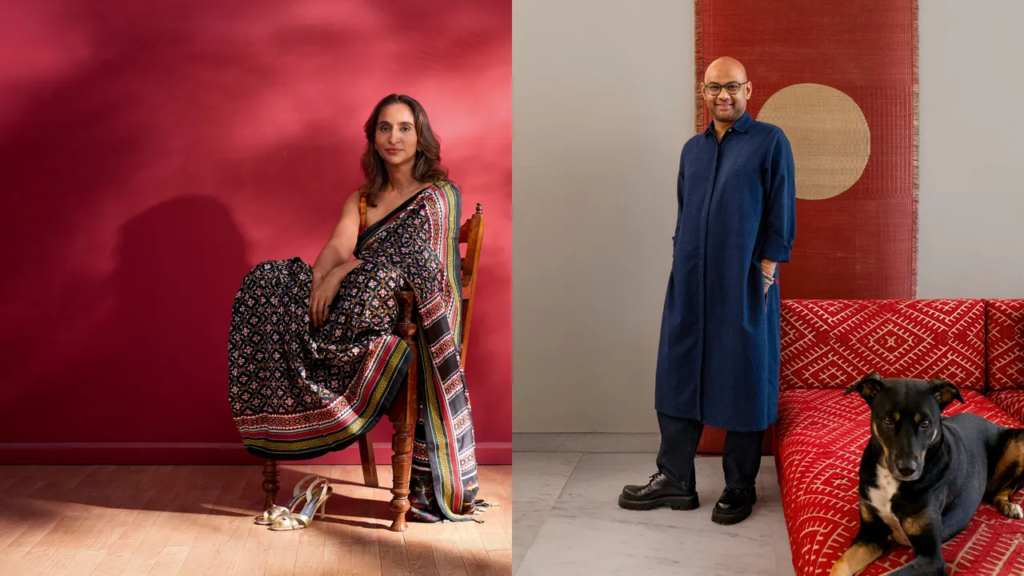Puja Vaish
Vaish holds the directorial reins at Jehangir Nicholson Art Foundation at the Chhatrapati Shivaji Maharaj Vastu Sangrahalaya (CSMVS), Mumbai. She has led several milestone projects here, like a retrospective on the late abstractionist Nasreen Mohamedi. Vaish combed through Mohamedi’s family collections to uncover rarely seen artworks, piecing together fragments of her life through handwritten letters and oral histories. She has also curated solo exhibitions of some of India’s most admired artists and photographers, including Nalini Malani and Dayanita Singh. As a lecturer at the Faculty of Fine Arts, Maharaja Sayajirao University, Baroda, and the Delhi College of Art, she has mentored emerging talent. Her transition into curatorial work began at Dr. Bhau Daji Lad Museum in Mumbai, where she was instrumental in shaping the institution’s exhibition and programming. Here, she researched colonial India’s rare art and design collections from the 1800s to early 1900s. She also conceived and launched Movies at the Museum, a programme which brought world cinema to the museum’s doorstep. Traditionally, museums have been seen as austere spaces, full of rules and “Do Not Touch” signs. Vaish has been working hard to dismantle that image. “Exhibitions come alive through audience participation,” she says. For CSMVS’s centenary show, she curated Ancestors, where the gallery was turned into a make-believe post-human archaeological crypt, populated by sculptural installations, paintings and drawings by multidisciplinary artist Sahej Rahal. “We made the decision not to have any labels in the show,” she recalls. Instead, visitors were invited to write their own labels responding to Rahal’s work and telling the history of human beings. “It was a way to get people to think about how history is written—and what often gets left out or erased,” she explains. “Museums are not just keepers of art, but spaces of encounter.”
— Radhika Iyengar. Photo: Kartikeya Manan
Mayank Mansingh Kaul
At 15, Kaul encountered an exhibition that would shape his imagination. It was Minakar: Spun Gold and Woven Enamel by Rahul Jain, staged at Delhi’s National Museum in 1997 as India celebrated 50 years of independence. “Fourteen jewelled textiles, all black, glistening in gold and silver, in a small gallery,” Kaul recollects. “Their weavers—the minakar—stood next to them in starched white kurtas. Visitors were handed magnifying glasses to see the intricacy of detail. I was transfixed.” Over the years, he has unleashed the potential of textiles to be multiple things: myth, politics or performance. Today, when Kaul takes you through an exhibition, it isn’t a tour but a
pilgrimage. In his practice across nearly 20 exhibitions, including Red Lilies, Water Birds (Hampi, 2022); Textiles from Bengal: A Shared Legacy (Kolkata, 2025); Pehchaan: Enduring Themes in Indian Textiles (National Museum, New Delhi, 2025); or Surface: Indian Embroideries and Surface Embellishment as Art (Jodhpur, 2025), the textiles he works with become living companions, bearing the memory of their makers, the pulse of their histories and the possibility of their reinventions. “When we were doing a show on indigo, Meanings, Metaphor – Handspun, Handwoven in the 21st Century (Bengaluru, 2018–19), by the third day, every member of the team was wearing indigo,” he says. “That, to me, was a successful thesis.” For him, preservation isn’t about sealing things away, but letting them breathe. Unless uniquely fragile, fabrics are draped across scaffolds, cascading down walls, stretching across canvas. “Textiles are not inert,” he insists. “They are meant to fall, to touch, to move.” In Hampi, that philosophy became an environment. Bamboo frameworks rose lightly against weathered stone; draped saris in Ilkal weaves and kasuti embroidery responded to shifting sunlight. The exhibition unfolded as a meditation on material and time—where cloth seemed to remember and stone seemed to breathe. Such freedom invites risk. “Most people would say I’m just some young guy trying something new,” he laughs. But beneath the poetics lies politics. Cloth, he reminds us, is second skin— marked by who weaves it, who wears it, who inherits it. Through his tactile exhibitions, Kaul makes cloth a site of democratic awakening, where touch becomes thought. Next, he prepares for an international curatorial project—an exhibition in Paris slated for January 2026. It will extend his lifelong inquiry into how we might not just look at textiles, but live through them.


